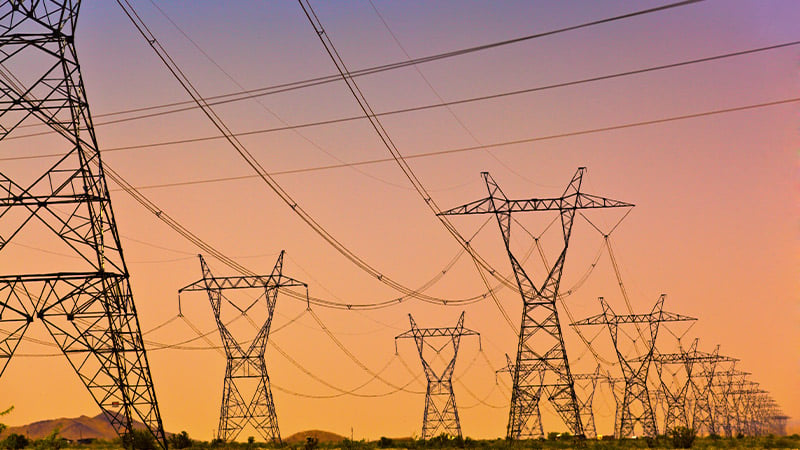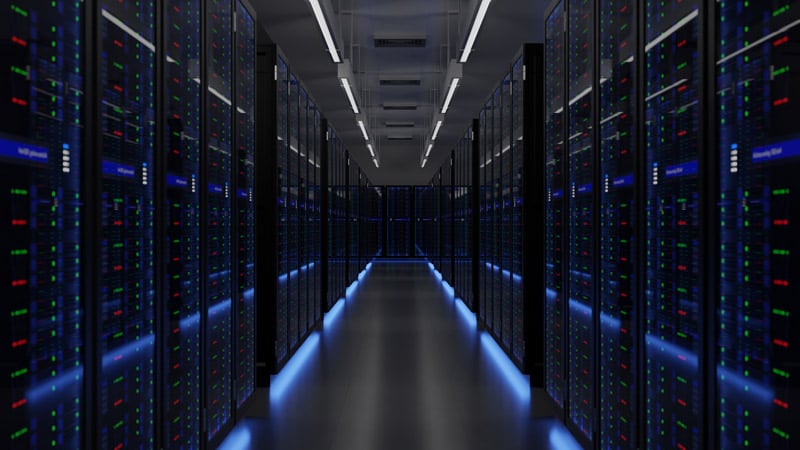The potential of high-voltage DC (HVDC) in AI/HPC data centers is seen as an inevitable step as rack-level DC power bridges the gap to increase energy efficiency.
*This blog is the second of a series identifying the promise of HVDC for data centers, early adoption case studies, and how rack-level DC power systems provide a practical bridge to an HVDC-enabled future.
Looking ahead, high-voltage DC (HVDC) power distribution is poised as a step in the right direction as the data center industry evolves. The concept involves distributing power directly within the facility at a higher DC voltage (e.g., 380V DC), potentially from the utility interface down to the racks.
HVDC has the potential to advance data centers, driving efficiency and environmental responsibility while accommodating surging IT and computing demands. Facility operators and decision-makers can take immediate steps toward modernization and remain agile for future innovations.
Looking ahead with HVDC
While full adoption of HVDC in data centers is still in progress, with standards under development and pilot projects validating the concept facilitated by open industry association EMerge Alliance, the promise of efficiencies and benefits is significant.
- Efficiency and savings gains: Early implementations of 380V DC power have demonstrated 10–15% efficiency improvements over comparable AC setups, reduced capital costs, and simpler designs. For instance, a 2010 Duke Energy pilot tested a data center using 380 V DC and saw up to 15% efficiency gain, and a 1.1 MW facility in Zurich achieved about a 10% gain compared to traditional AC distribution. These results underscore that DC distribution can deliver real savings at scale as IT loads grow.
- Since 2010, production-scale deployments of 380 V DC systems have been successfully implemented, delivering up to 25% energy savings. In 2014 integration with a 14.1 MW solar farm yielded 10–20% efficiency gains versus AC systems. These deployments go beyond pilot testing and represent fully operational systems that have supported critical loads in enterprise and hyperscale environments for over a decade.
- Integration with alternative energy: Alternative energy sources like solar panels or fuel cells natively produce DC power. This could eliminate more conversion stages (e.g., AC UPS in/out and PDU transformers), making HVDC an ideal pairing. By eliminating AC-DC conversion steps, data centers can more easily tap into multiple distributed energy resources (DERs) and systems.
- Hybrid AC and HVDC models. The industry is expected to undergo a transitional phase where AC utility feeds coexist with internal HVDC buses (be it from a centralized rectifier plant, alternative energy source, or DC microgrid). Rack-level DC systems, such as the Vertiv™ PowerDirect Rack, already support hybrid models as shelves can become a native part of the hybrid ecosystem, enabling immediate adoption alongside AC infrastructure as backup while preparing the infrastructure for HVDC and gaining the increased density benefits.
- Standards in development. Industry consortia like the EMerge Alliance and Open Compute Project (OCP) are working on standardizing HVDC power distribution. In the coming years, we’re likely to see broader standardization of ~380V DC to 800V DC distribution. This standardization will accelerate adoption, making it easier for operators to implement HVDC solutions confidently.
Taking action with rack-level DC power
Deploying DC systems today prepares data centers to thrive in an HVDC future. By streamlining power delivery and reducing conversion losses, DC architectures improve efficiency and allow much higher power densities per rack than traditional setups. They empower operators to scale power alongside the increase in compute without the dead ends and bottlenecks of legacy designs. As we prepare for an HVDC-enabled future, these solutions are the crucial first step—bridging today’s AC-driven facilities with the next generation of smart, DC-powered data centers.
Vertiv™ PowerDirect Rack integrates seamlessly into hybrid models with its ability to accept HVDC input. Operators can optimize efficiency now while positioning their facilities to adopt HVDC without costly upgrades. The third blog discusses how Vertiv™ PowerDirect™ Rack contributes to the speed and scalability this rack affords data centers and delves deeper into the efficiencies DC-powered systems afford data center facilities.









